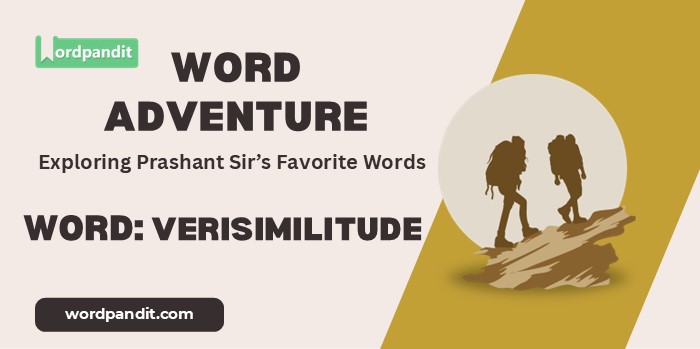Word Adventure: Verisimilitude
The Headline
“Verisimilitude: The Art of Making Fiction Feel Real”
The Scoop
In the realm of storytelling and creative arts, some words carry special weight for their ability to capture complex artistic principles. ‘Verisimilitude’ is one such term – a word that describes the delicate balance between fiction and reality, imagination and truth. Join me as we explore how this sophisticated concept shapes our experience of art and literature.
Let’s Break It Down
The Plot Thickens
The journey of ‘verisimilitude’ through history is as fascinating as its meaning. The term emerged in the mid-16th century from Latin roots, but its concept has been central to artistic creation since ancient times. Aristotle discussed it in his Poetics, emphasizing the importance of probability and plausibility in storytelling.
In literature and art, verisimilitude doesn’t just mean making something seem real – it’s about creating an internal consistency that allows audiences to suspend their disbelief. Even in fantasy or science fiction, where the world itself may be impossible, good verisimilitude makes the story’s events feel natural and believable within its established rules.
Today, the term is particularly relevant in our age of virtual reality, CGI, and immersive storytelling, where creating convincing artificial experiences has become both an art and a science.
Word in the Wild
The Twist
Here’s an intriguing paradox about verisimilitude: sometimes, making something too real can actually make it seem less believable! This phenomenon, known as the “reality is unrealistic” trope, occurs because our expectations of how things should be often differ from how they actually are. For instance, real dialogue is full of stutters, interruptions, and non sequiturs, but including too many of these in fictional dialogue might break the reader’s immersion. The art of verisimilitude, then, isn’t just about copying reality – it’s about crafting a version of reality that feels true to our perceptions and expectations.
Make It Stick
Verisimilitude: Where truth meets fiction in a dance of believability!
Your Turn
Think about a book, movie, or TV show that impressed you with its verisimilitude. What specific elements made it feel real to you? Conversely, can you recall a moment when poor verisimilitude pulled you out of the story? Share your experiences in the comments below. Let’s explore how this crucial artistic principle shapes our engagement with stories!
Down the Rabbit Hole
- Curious about literary theory? Explore concepts like ‘willing suspension of disbelief’, ‘mimesis’, or ‘narrative immersion’.
- Interested in the craft of writing? Research ‘world-building’, ‘character development’, or ‘dialogue writing’.
- Want to dive deeper into artistic realism? Look into ‘trompe l’oeil’, ‘hyperrealism’, or ‘method acting’.
The Last Word
As we conclude our exploration of ‘verisimilitude’, I hope you’ve gained a deeper appreciation for this subtle yet powerful concept. It reminds us that the art of storytelling isn’t just about imagination – it’s about creating worlds and characters that ring true in our hearts and minds. The next time you find yourself lost in a compelling story, remember that you’re experiencing the magic of verisimilitude at work! Until our next word adventure, this is Prashant from Wordpandit, encouraging you to seek truth in fiction and fiction in truth!












